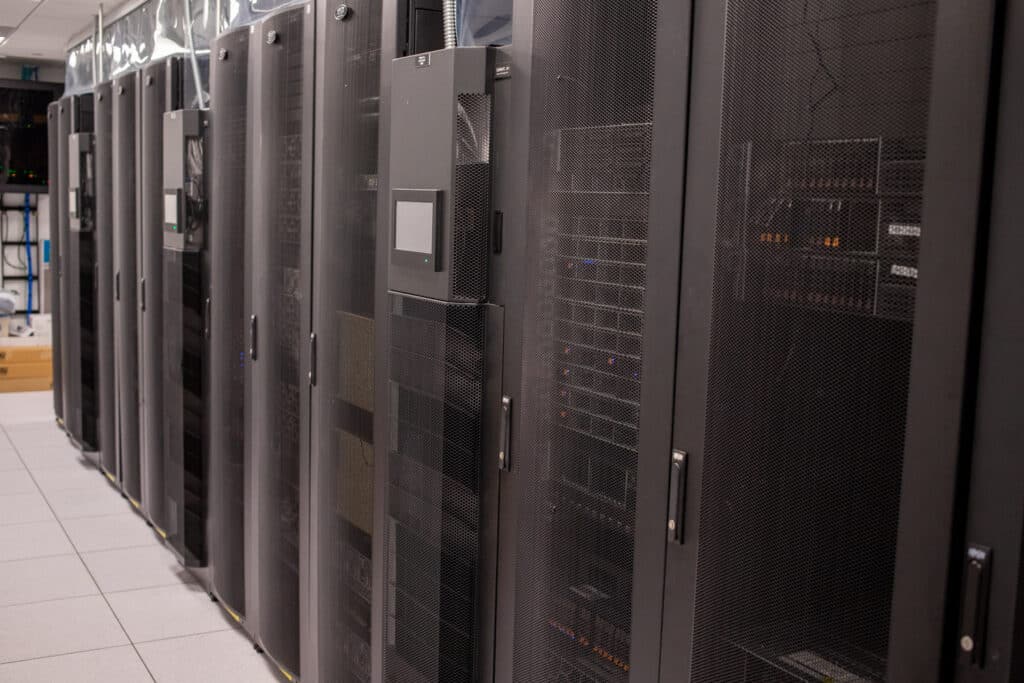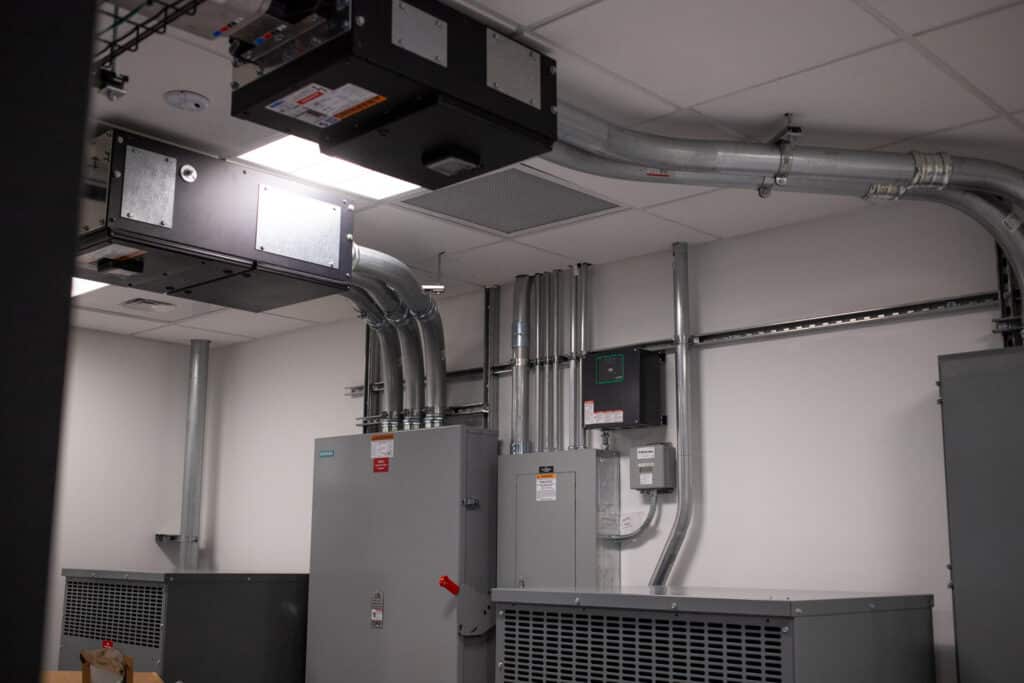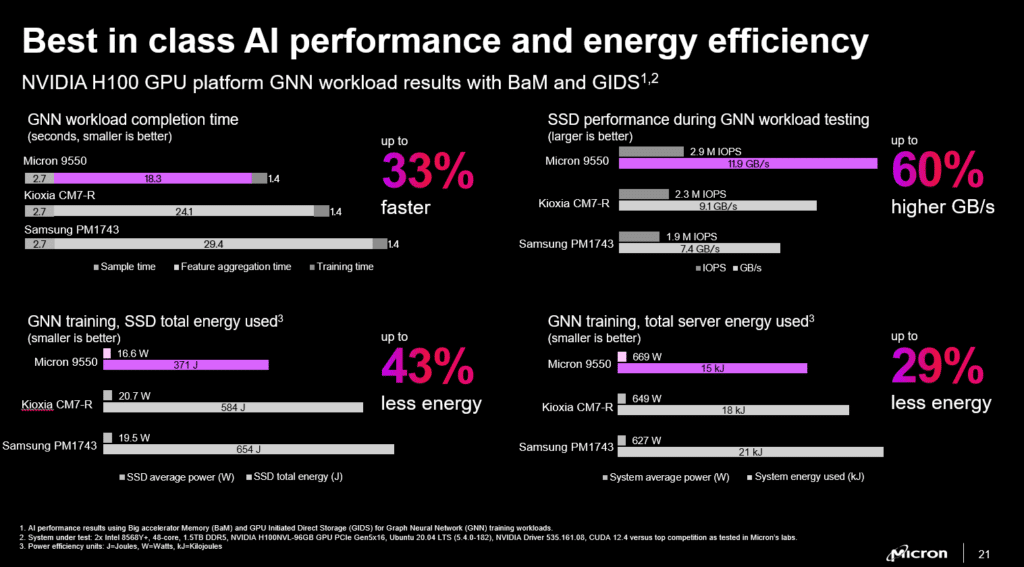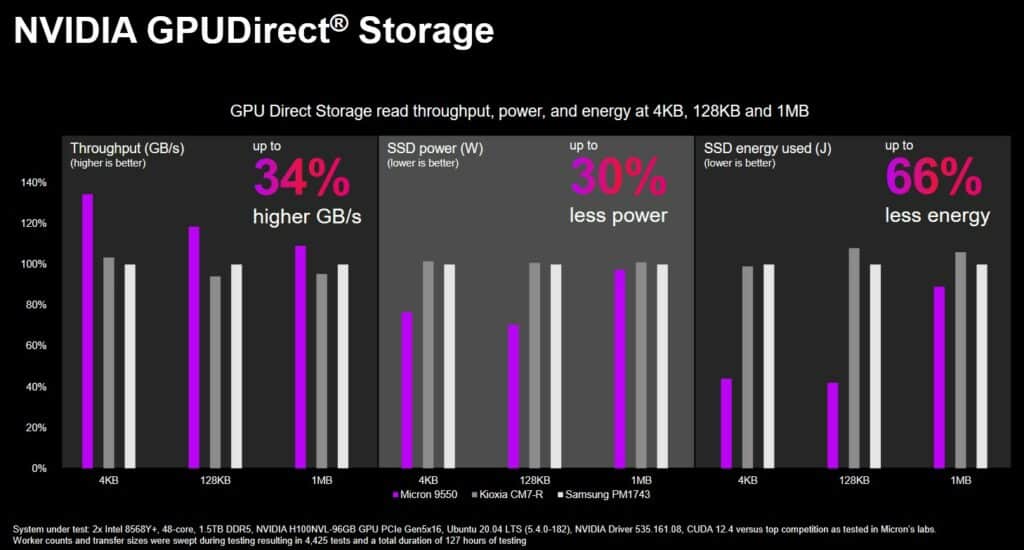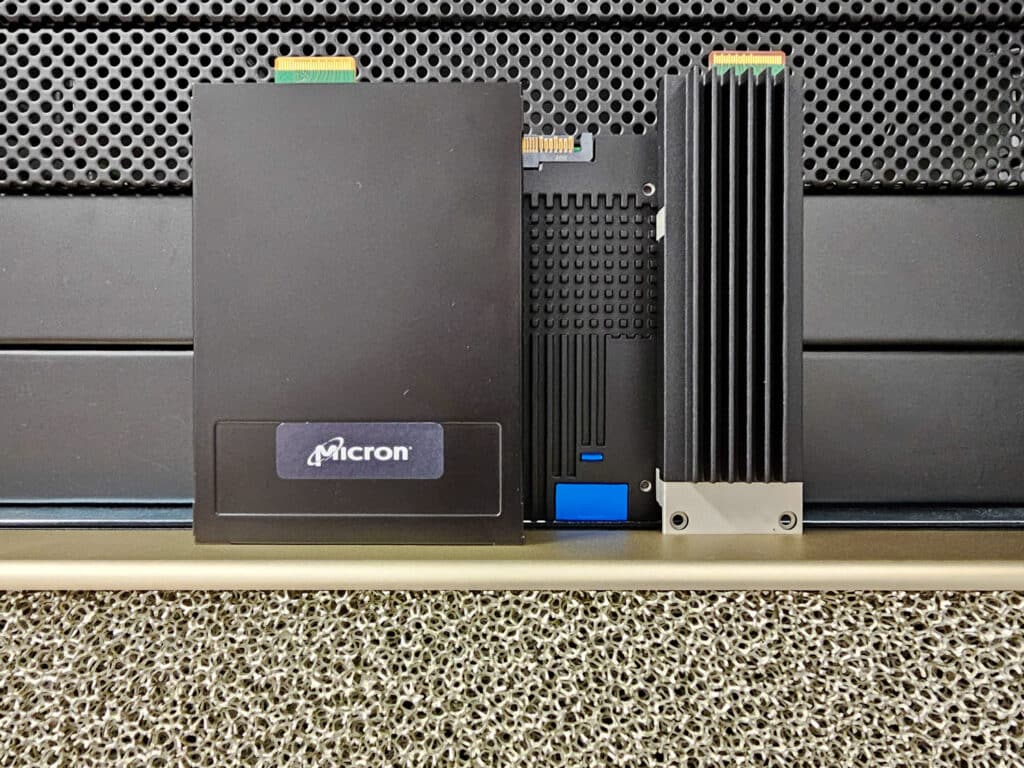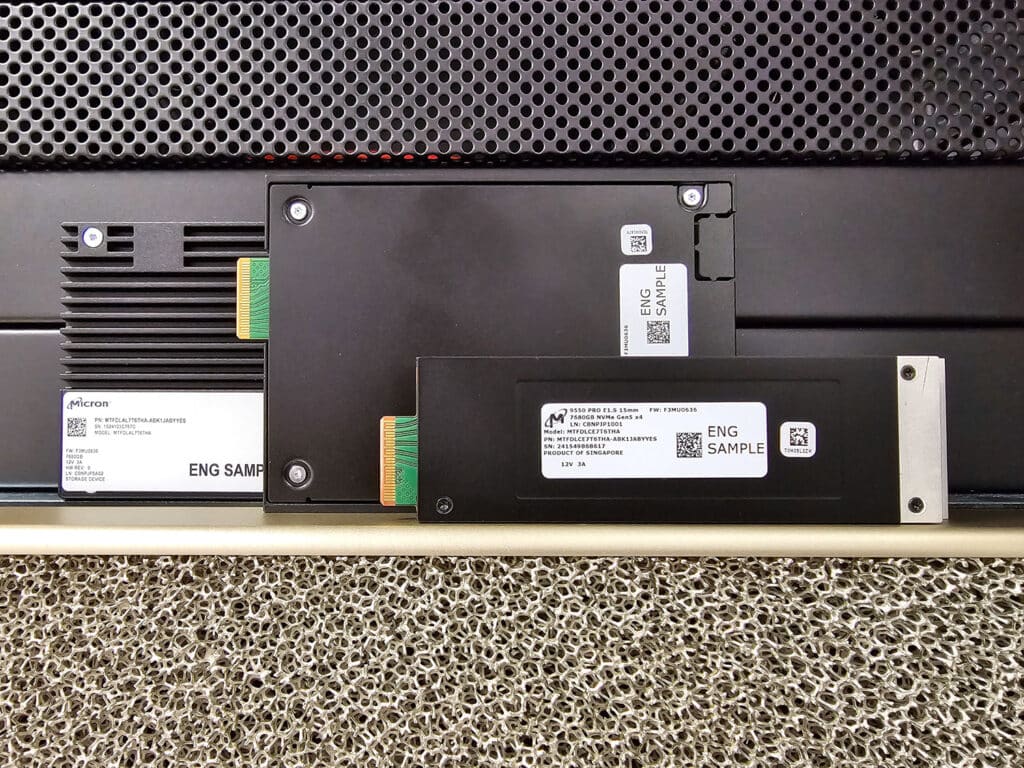With its top-tier performance and power efficiency, Micron’s PCIe Gen5 9550 SSD is expected to set new standards for AI and data center applications.
Micron Technology is planning to redefine the benchmarks for data center storage by introducing the Micron 9550 SSD. This drive caters to the all-too-familiar demands of modern data centers and AI applications, delivering exceptional performance. What’s unique though is Micron has an entire push around power efficiency. In a market where performance leads the marketing push, Micron says why can’t it be efficient too?
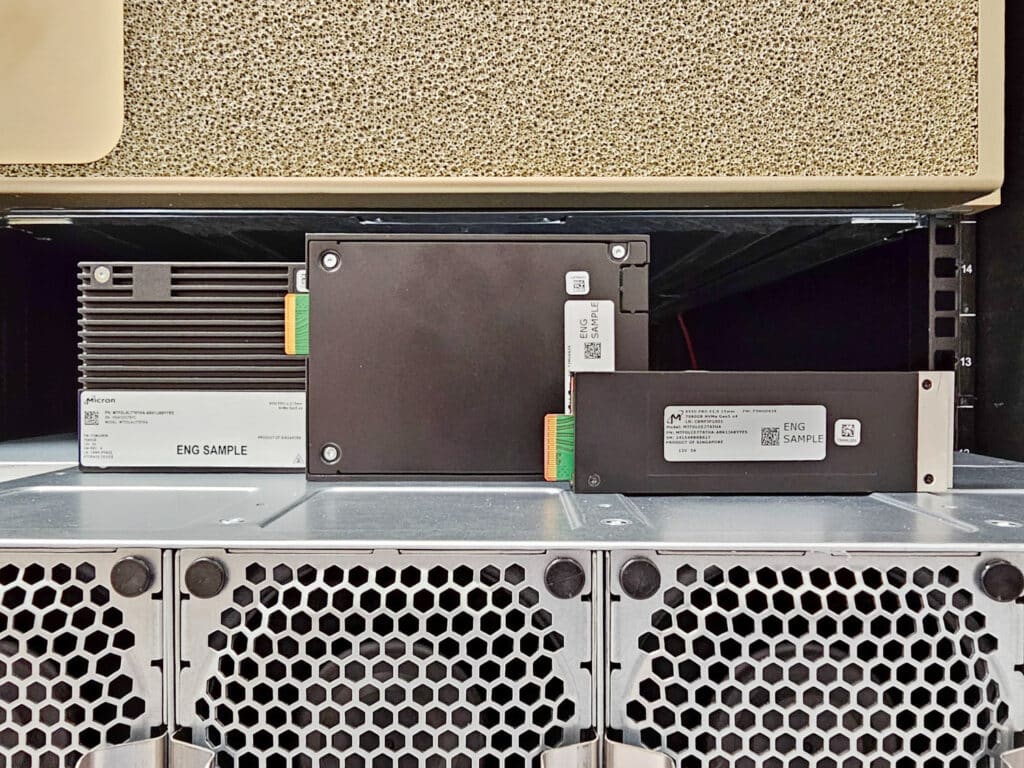
Last week, Micron brought StorageReview on-site to visit their Austin, TX location to brief us on their upcoming 9550 SSD launch. While we were out there, we also had the chance to tour their testing facility where they put drives through different workload scenarios. With the storage industry leaning towards optimizing around emerging AI workloads, Micron has a huge advantage with a significant amount of hardware dedicated to the task.
We are talking racks of servers, including GPU-dense servers with an incredible amount of power to keep everything running smoothly – over 500 kVA. Micron’s lab summary includes 200+ AMD, Arm and Intel servers, 400GbE and 200Gb IB networking, and numerous NVIDIA platforms. This includes the DGX A100 as well as others with L40S and H100 GPUs. This isn’t a common setup by any means, and it gives Micron a huge advantage to optimize around these new workload types.
Micron 9550 SSD Performance and Power Efficiency
The Micron 9550 SSD touts industry-leading performance metrics while setting new standards in speed and efficiency. On paper, the company indicates sequential read speed at 14GB/s, making it one of the fastest SSDs available on the market. Additionally, it offers a sequential write speed of up to 10GB/s, significantly outpacing its competitors. The SSDs also excel in random read and write throughput, delivering 3.3 million IOPS and 400,000 IOPS, respectively. These metrics ensure rapid data access and processing, which is critical for AI and machine learning workloads. Another huge item not seen across competing Gen5 SSDs is the Micron 9550 performs the same no matter which interface you choose; U.2, E1.S, or E3.S.
The exceptional power efficiency truly sets the Micron 9550 apart from its competitors. This top-tier performing SSD features minimal power draw in a landscape where energy consumption is a growing concern. For AI workloads, such as Graph Neural Network (GNN) training, the 9550 demonstrated up to 43% less energy consumption compared to other leading SSDs. Micron’s new SSD demonstrates remarkable efficiency without sacrificing performance. It provides up to 60% higher throughput in demanding scenarios.
BaM: AI Workloads Handled!
The Micron 9550 SSD is designed and tested to meet the high demands of AI and data center environments. Micron leverages AI software such as Big Accelerator Memory (BaM) and GPU-Initiated Direct Storage (GIDS) to tune performance, especially during AI training scenarios.
Big Accelerator Memory (BaM) and GPU Initiated Direct Storage (GIDS) technologies are being developed to route NVMe storage directly to GPUs. These technologies leverage high GPU thread parallelization to unlock the full potential of Gen5 SSDs when used with the latest NVIDIA hardware.
Micron works with NVIDIA and open source developers to optimize performance and power on its data center SSDs to help ensure the technologies meet the needs of the most demanding AI workloads. In their testing, Micron saw up to a 60% SSD performance increase, up to 43% less SSD energy used, and up to 29% less overall server energy used to complete the same GNN training workload.
BaM and GIDS are research projects based on the following paper, with open-source code available on GitHub. GPU-Initiated On-Demand High-Throughput Storage Access in the BaM System Architecture. GitHub https://github.com/ZaidQureshi/bam
Micron also saw exceptional performance from the 9550 with NVIDIA GPUDirect Storage (GDS), delivering up to 34% higher throughput and reducing SSD energy consumption by up to 66% in GDS operations.
Micron 9550 SSD Features and Form Factors
Security and reliability are paramount in enterprise environments, and the Micron 9550 SSD also delivers on these fronts. It features power loss protection, end-to-end data path protection, and compliance with the Open Compute Project (OCP) Datacenter NVMe SSD Specification 2.0r21 to simplify management. These features ensure data integrity, security, and unified management, which are critical for enterprise environments.
The Micron 9550 SSD comes in various form factors, including U.2 (15mm), E3.S (1T), and E1.S (15mm), and offers capacities from 3.2TB to 30.72TB. It is built with Micron’s advanced 3D TLC NAND and integrates seamlessly with PCIe Gen5 x4 NVMe interfaces. The SSD also includes a comprehensive security suite featuring TCG Opal 2.01, secure erase, secure boot, and secure signed firmware.
Micron 9550 SSD Specifications
| Feature | Details |
| Form Factors | U.2 (15mm), E3.S (1T), E1.S (15mm) |
| Capacities | 3.84TB, 7.68TB, 15.36TB, 30.72TB, 3.2TB, 6.4TB, 12.8TB, 25.6TB |
| Sequential Read Speed | 14,000 MB/s |
| Sequential Write Speed | 6,000 MB/s to 10,000 MB/s (varies by capacity) |
| Random Read Throughput | 2,800 KIOPS to 3,300 KIOPS (varies by capacity) |
| Random Write Throughput | 280 KIOPS to 900 KIOPS (varies by capacity) |
| Power Loss Protection | Yes |
| End-to-End Data Path Protection | Yes |
| Compliance | OCP 2.0+, NVMe 2.0, FIPS 140-3 L2, TAA |
| Interface | PCIe Gen5 x4 NVMe |
| Warranty | 5 years |
The Micron 9550 SSD is set to be one of the fastest and most efficient data center SSDs on the market. It provides the high-speed performance necessary for modern AI and data center applications while maintaining low power consumption. It is a game-changer for organizations seeking to enhance their data center capabilities without compromising energy efficiency.
Engage with StorageReview
Newsletter | YouTube | Podcast iTunes/Spotify | Instagram | Twitter | TikTok | RSS Feed

